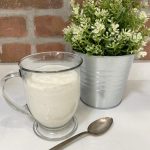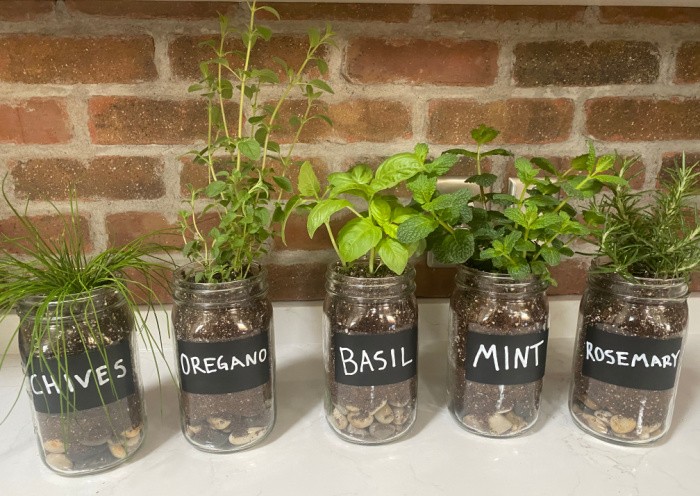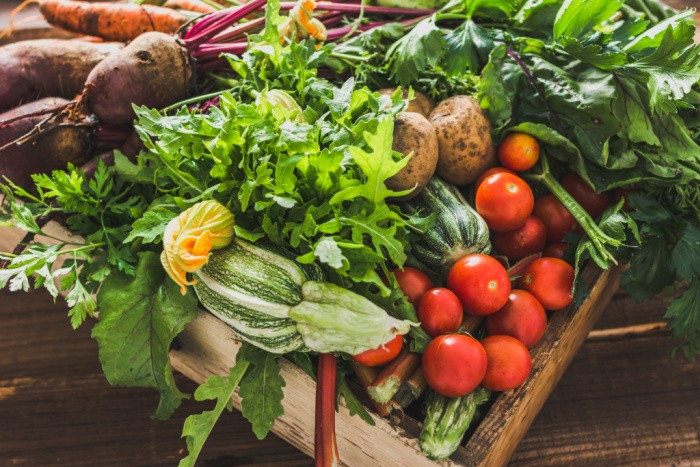Broccoli: Everything You Need to Know
Do you remember as a kid sitting there at the dinner table for a long period of time with broccoli staring back up at you? Anything green on your dinner plate was an automatic nose up in the air, meaning broccoli didn’t make the cut. Broccoli: everything you need to know, is a little more complex than you might think.
As you’ve gotten older, you’ve learned to love them (or at least we hope). While your mom always said that they were good for you, did she ever take the time to tell you how so? Probably not. We’ll tell you things about broccoli that you might not know, and several health benefits that they bring to the table.
This is one of my favorite ways to eat fresh broccoli, I love dips of all kinds. This is my homemade Ranch Salad Dressing. The recipe is below, if you want to make it.

Broccoli: Everything You Need to Know
Broccoli is a vegetable that comes from the Brassicaceae family (mustard). A few vegetables in this family include cauliflower, kale, and cabbage. They have flowered heads and usually come dark green in color, though purplish-green and sage green are options too. There are three different types of broccoli, Calabrese, sprouting and purple cauliflower.
Fun Facts
Did you know that broccoli is man-made? It’s true. Italian farmers around the time of the Roman Empire began selective breeding various types of cabbages a little over 2,000 years ago.
- In just the past 25 years, the world consumption of broccoli has increased at an incredible 940%. (26 million tons in 2017) Maybe kids are starting to come around to eating it? We’re not sure.
- Unlike many other vegetables, there are no machines to harvest broccoli, so they have to be cut individually by hand.
- Broccoli was not introduced to the United States until sometime in the 1800’s, but didn’t become a go-to vegetable until around 1920.
- The United States ranks 3rd in the world for cultivating broccoli, behind China (1st) and India (2nd).
- The state of California produces a whopping 90% of all the broccoli crops in the United States.
Broccoli: Nutrition Facts
Broccoli consists of about 90% water and happens to be low in calories. (Around 31 calories per cup) While broccoli does have 6 grams of carbs, most of them are fiber and sugars. They also contain a decent amount of protein, but because of the water content, it only provides about 3 grams of protein per cup.
Broccoli also has several vitamins and minerals. As far as vitamins go, broccoli contains large amounts of vitamins B9 (Folate), C, and K1. Potassium, iron, and manganese are a few of the most notable ones that you’ll find in broccoli, but there are small traces of other vitamins and minerals as well.
Other Compounds
You can also find antioxidants and other compounds in broccoli that can help with several health benefits. Some of these include carotenoids, kaempferol, indole-3-carbinol, sulforaphane, and quercetin.
Broccoli: Everything You Need to Know, Health Benefits
Helps with Digestion
Dietary fiber in broccoli can help you with regularity, and keep constipation at bay. They can also help reduce the chances of getting colon cancer. That’s because studies have shown that people that consumed more fiber than those who didn’t, were far less likely to develop colorectal cancer.
Helps Prevent Cancer
Broccoli and other cruciferous vegetables are filled with several antioxidants that are thought to help prevent various types of cancer. Some of these cancers include breast, prostate, lung, pancreatic, colorectal and gastric. These vegetables also help with inflammation and strengthen your immune system.
Reduces Risk of Diabetes
People that have type 2 diabetes while eating broccoli, have been able to better manage and lower their blood sugar levels. It’s also been proven that people that eat a diet with higher amounts of fiber also reduces the risk of diabetes.
Improve Skin Health
Vitamin C is an antioxidant that can help prevent skin damage, including aging and wrinkling. It may even help prevent shingles and skin cancer.
Maintain Good Eye Health
As we get older, our eyesight begins to deteriorate. Those that struggle with vitamin A deficiency increase the likelihood of night blindness. Eating broccoli more consistently has shown to reverse this and also to reduce the chances of getting age-related eye disorders when we become older.
Improves Bone Health
Did you know that 99% of your body’s calcium is found in your bones and teeth? Eating broccoli, which is filled with calcium and collagen, helps strengthen those bones. Vitamin K, that is also in broccoli, may even help prevent and treat osteoporosis.
A Few Things to Be Aware of with Broccoli
Although broccoli is good for you and very few people struggle with allergies due to eating it, you need to be aware of a few things. Broccoli also contains goitrogen, which can cause thyroid problems in individuals that are sensitive.
If you’re also taking blood thinners, you’ll want to talk with your doctor to make sure that the K1 vitamin that’s present, doesn’t cause problems with your blood thinner medication.
Cooking Broccoli
You can cook and prepare broccoli a number of ways, but steaming them has proven to be the best, as far as preserving its nutrients. You can also stir-fry them, while many people even microwave them.
Make sure that you cook them for a minimum amount of time to hold onto their nutrients and not cause them to become overbearing in flavor and aroma. Check out some of these recipes that call for broccoli, that you can have for dinner tonight. They can also be enjoyed raw too.
Storing Broccoli
Fresh broccoli is meant to be eaten fairly quickly. Make sure that you don’t store it in a plastic bag or sealed container because raw broccoli needs air circulation.
Mist the broccoli heads (don’t wash) and wrap them loosely in paper towels, and then store them in your refrigerator. It’s best to eat them within 2 to 3 days.
Everything You Need to Know Series:
- Cucumbers: Everything You Need to Know
- Kale: Everything You Need to Know
- Broccoli: Everything You Need to Know
- Mushrooms: Everything You Need to Know
- Lettuce: Everything You Need to Know
- Carrots: Everything You Need to Know
- Tomatoes: Everything You Need to Know
- Potatoes: Everything You Need to Know
Ranch Salad Dressing/Dip

- 1 cup buttermilk
- 1 cup mayonnaise
- 2-3 tablespoons garlic powder or salt
- 2 tablespoons Italian Seasoning
- 2 teaspoon salt
- 1 teaspoon pepper
-
Mix together and store in a container. I like to use pint canning jars. This recipe is so easy to make and tastes better than any bottled ranch dressing you can buy. It is so good on a salad, coleslaw and as a dip! Please keep refrigerated.
Final Word
Now that you have a better understanding of why broccoli is good for you, you can now rest easy knowing that your consumption of them over the years hasn’t been in vain. Do you have a garden? This is where I buy my garden seeds: SeedsNow
What was the one thing that was mentioned that surprised you most about broccoli? Do you have any of these health problems that eating more broccoli might help? Stay safe and be aware of your surroundings. May God bless this world, Linda
Vegetables That Grow In The Shade
20 Ways To Enjoy More Broccoli
Copyright Images: Broccoli Depositphotos_21127493_s-2019, Broccoli and Ranch Depositphotos_243013198_s-2019






















One thing you have to be careful with if you are on blood thinners it messes with your blood.
I have a heart valve replacement and I am on warfrain and I have to be careful how much
dark Veggies I can have. But I do eat it just careful about how much I have.
Hi June, I didn’t know you had a heart valve replacement, WOW! Yes, I wrote about using blood thinners in the article. I will go in and make it a little bolder so people see it. Thank you, my friend, Linda
Of course if it’s in Broccoli, rice, cheese casserole it’s worth the risk.
Oh, June, that is the best statement ever! My husband’s favorite dinner is broccoli, chicken, and cheese casserole over rice!! Love it! Linda
I tried growing broccoli many times: I think I have too short a growing season. I’ve always loved broccoli but only eat it (small amt) about once a week as I’m on blood thinner too (aorta replacement). Broccoli is the ‘top’ Vitamin K food on diet sheet given to me after surgery: it must have a lot in it and K messes with blood thinners. ☮️
Hi Wendy, oh my gosh, you had an aorta replacement!! Yes, broccoli does have a lot of Vitamin K. Those darn blood thinners! You gotta have them. Linda
Broccoli – wonderful veggie! I have always loved broccoli even as a child. Of course, growing up on a farm and growing our own veggies was key to that. I was introduced to veggies almost from birth and love almost all of them.
I like fresh raw florets but not as much as steamed or stir fried broccoli. My biggest issue has always been steaming though as I always ended up with way over-cooked broccoli! One day a few years ago I received a Ziplock steamer bag in the mail (just one) and the first thing I tried in it was broccoli. I was SOLD! It takes only a minute or 2 in the microwave and I had perfectly steamed veggies! I have also steamed mixed veggies in those bags and all of the veggies came out perfectly steamed at the same time! Love those bags.
As long as all I am steaming is veggies in the bags, I will wash them and reuse them 3-4 times before disposing of them. If I use any meat in them (mixed veggies and already cooked meat) I don’t reuse.
And these bags are the perfect size for 1-2 people. I don’t or haven’t ended up with left overs. They would be too expensive for trying to use for a family though (at least I think they would and it would take several rounds in the microwave!).
Hi Leanne, I love hearing about those bags! I love broccoli, I’m glad I’m not on blood thinners so I can eat as much as I want for now, anyway! Linda
I try to grow and freeze as much broccoli as possible, especially with DH’s T2D. Easiest way with him is to simmer or steam the broccoli, add a pat (or more) of butter, and sprinkle with (lots of) Parmesan cheese. (Remember–healthy fat isn’t the enemy, it’s carbs that are bad for you!)
With small kids–I remember someone telling about having their child pretend to be a giant, pulling up trees and eating them!
In the garden… A short season really shouldn’t be too big a problem, but broccoli does prefer cool conditions–so growing earlier in spring and again in the fall works better than in midsummer heat. Seed catalogues usually tell if a certain variety does better for one season or the other. Some varieties will put out side shoots after the main head is cut, too! And while the 1-foot-apart broccoli plants are small, interplant something quick-growing like radishes, which will be removed and eaten long before the broccoli needs the space.
The thick stalks can be peeled (since it’s the skin that’s tough) and diced, then added in with the broccoli heads, soups, stews, etc. Or, shred the stalks and make broccoli slaw. I haven’t gotten around to trying broccoli stem sauerkraut! And the rest of the plant, whenever it finally gets pulled from the garden, I give to the chickens… They love it even when the remaining stalk and leaves are frozen in late fall!
Hi Rhonda, I grew broccoli for years but I haven’t tried growing it here in Southern Utah. Great comment with tips, I love it! Thank you so much! Linda
I love the tips I get from your readers. This next question is off the topic of greens but if you could address it in the next week, I’d appreciate it. You are maybe the only internet site I trust to find out food facts. Anyways, I cleaned out a cupboard shelf of ‘cooking/baking foods’. Found a bag of white whole wheat flour and a huge bag of all-purpose flour. Both are past their ‘better if used by’ dates. Neither had any crawlies in them but the paper bags were loose (like, degrading?) . I just can’t stand to throw away food so I put the flours in qt canning jars. Should I freeze the jars or heat in oven to kill potential crawlies? I just got 8-4 lb bags of white cornmeal from a wholesale community place and need to know how to store long-term also. I may Never ‘have to use’ any of these three things but a person never knows. I’m thinking I may try to make corn bread taco shells this weekend. I’d appreciate tips you may have on this too. Thank you very much for all the things you teach us. ☮️
HI Wendy, I would trash the whole wheat white flour, it would have to be rancid if it’s in a bag. The white flour is only good for 12-18 months. It can have mold spores, better safe than sorry. Do you have my book, Wendy? I would love to send one to you. The cornmeal needs to be stored in the freezer. I have a post going live on my cornbread recipe in a few days!! It’s so good!! Please email me your address to foodstoragemoms@yahoo.com The reason I say that is my book has the shelf life of almost everything. I so appreciate your kind words, I work really hard to get the best topics written for my readers! Hugs, Linda